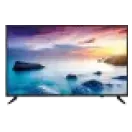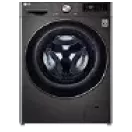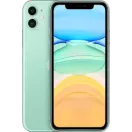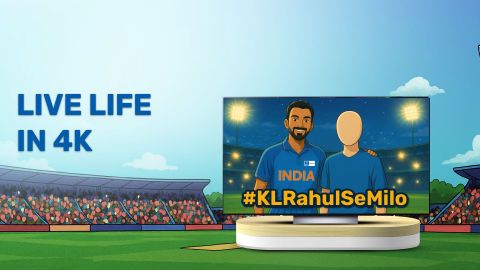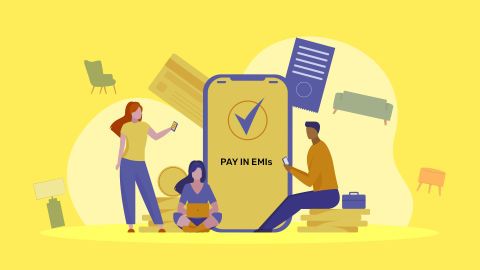Both WebOS and Android TV are popular operating systems for smart TVs. Each comes with its own features and advantages. WebOS, found mostly in LG TVs, is known for its simple interface and fast navigation. Android TV, used by many brands, offers access to thousands of apps through Google Play.
You can stream shows, mirror your phone, use voice search, and more. Android TV works well with Google Assistant, while WebOS is more compatible with LG services. Choosing between Android vs WebOS depends on what matters most to you—ease of use, app variety, or smart home control.
Why spend more when you can save more? Use the Maha Bachat savings calculator to combine dealer offers, brand offers, and Bajaj offers to bring down your purchase cost. Calculate your extra savings today!
WebOS vs Android TVs - Definitions
Android TVs: Android TV is a smart TV platform developed by Google. It offers access to many apps through the Google Play Store. You can use Google Assistant for voice control and stream content from your phone using Chromecast. Android TV is widely used in brands such as Sony, Philips, and Xiaomi. It is a flexible and feature-rich option.
What is WebOS: WebOS is developed by LG and is known for its simple interface. It features a ribbon-style launcher for quick access to apps and settings. WebOS supports LG ThinQ AI for voice control and includes popular streaming services. It is available mainly on LG smart TVs.
If you are exploring other models, you can also check comparisons like LED TV vs LCD TV to match your needs.
WebOS vs Android TVs - Key differences
User interface: WebOS has a ribbon launcher at the bottom of the screen. This makes it easy to switch between apps. Android TV uses a grid layout and shows personalised suggestions.
App availability: Android TV supports a large number of apps via the Google Play Store. WebOS includes key apps but offers a smaller selection.
Voice control: Android TV works with Google Assistant. WebOS uses LG's ThinQ AI. Both systems offer voice features but in different ways.
Casting and connectivity: Android TV supports Chromecast. This allows smooth casting from mobile devices. WebOS uses Miracast for screen mirroring.
Operating system: WebOS is known for its smooth and simple interface. Android TV gives a more customisable experience. Android TVs also receive more regular software updates.
Apps and ecosystem: Android TV offers more apps and works well with Google services. WebOS provides a more focused and curated app list. Android is better for those who use many streaming services.
Device compatibility: Android TV works well with other smart devices and Google services. WebOS has limited integration in comparison. Your choice depends on how much smart home connectivity you need.
Learning curve: WebOS is easier to learn and use. Android TV may take more time due to custom settings. Choose WebOS if you prefer a simple start. Choose Android TV for more control.
Screencasting: Android TV has built-in Chromecast, making casting easy. WebOS supports casting, but the experience is not as seamless. For better screencasting, Android TV may be ideal.
For bigger screens, you can also explore a 65-inch TV.
Smart Features and customisation
WebOS: WebOS is simple and easy to use. It includes ThinQ AI, screen mirroring, and a launcher bar you can customise. It supports all major streaming services. It is great for users who want quick access and smooth performance.
Android TV: Android TV offers many ways to customise. You can download apps, games, and widgets from the Google Play Store. It also includes Google Assistant and works with Chromecast and Google Home. You can make your home screen and settings suit your needs.
How to choose between WebOS and Android TV
Choosing between WebOS and Android TV depends on what you need. If you want simple use and quick access, WebOS is a good choice. If you want more apps and smart device control, Android TV may suit you better.
Both systems offer smart features to enhance your viewing. Think about the interface, apps, and voice control before deciding. If you prefer a TV with a wide app range and advanced voice features, consider Android TV. If you want easy navigation and solid performance, WebOS could be right for you.
Updated Price List of WebOS and Android TVs in India (November 2025)
Shopping for a new smart TV can be tricky with so many choices in the market. Whether you love the smooth and AI-driven WebOS experience or prefer the flexibility of Android TV with thousands of apps, there’s a perfect match for every household. Here’s a quick look at the latest Android and WebOS TV prices in India (November 2025).
Android TV Models – Price List (November 2025)
Model
|
Price
|
Description
|
Foxsky 80 cm (32 inch) HD Ready LED Smart Android TV (32 FSELS PRO)
|
Rs. 6,999
|
A budget-friendly 32-inch HD Ready Android TV with smooth performance and smart features.
|
BESTON 80 cm (32 inch) HD Ready LED Smart Android TV 2025 Edition (BS32HD1)
|
Rs. 7,499
|
Compact Android TV with HD Ready display, ideal for bedrooms or small spaces.
|
Foxsky 109 cm (43 inch) Full HD LED Smart Android TV (43FS-VS//43FSFHS)
|
Rs. 12,499
|
Affordable 43-inch Full HD Android TV with seamless connectivity.
|
InnoQ Spectra 108 cm (43 inch) Full HD LED Smart Android TV (43S-SPECTRA-V2)
|
Rs. 12,990
|
Comes with 30W Boom Speakers, mobile screen connect, and 1000+ apps.
|
BESTON 109 cm (43 inch) Full HD LED Smart Android TV 2025 Edition (BS43FHD)
|
Rs. 13,999
|
Full HD Android TV with smooth interface and crisp visuals.
|
WebOS TV Models – Price List (November 2025)
Model
|
Price
|
Description
|
LG LR570 80 cm (32 inch) HD Ready LED Smart WebOS TV 2025 Edition (32LR570B6LA)
|
Rs. 14,490
|
HD Ready WebOS TV with AI Brightness Control and built-in Alexa.
|
LG LR600 80 cm (32 inch) HD Ready LED Smart WebOS TV 2025 Edition (32LR600B6LC)
|
Rs. 15,990
|
Features AI functions, HDR 10, and access to 100+ free LG channels.
|
LG AI TV UR7500 108 cm (43 inch) Ultra HD (4K) LED Smart WebOS TV 2025 Edition (43UR75006LC)
|
Rs. 31,990
|
4K upscaling with AI Sound and brightness control, supports Apple AirPlay.
|
LG AI TV UA8200 108 cm (43 inch) Ultra HD (4K) LED Smart WebOS TV 2025 Edition (43UA82006LA)
|
Rs. 34,990
|
Powered by Alpha7 AI Processor 4K Gen8 with Dolby Atmos and Chromecast built-in.
|
LG AI TV UA8200 139 cm (55 inch) Ultra HD (4K) LED Smart WebOS TV 2025 Edition (55UA82006LA)
|
Rs. 44,990
|
Large 55-inch display with AI Picture Pro, Dolby Atmos, and next-gen AI features.
|
Disclaimer: The features, availability, and pricing of each model are subject to change and may vary. For the most accurate and up-to-date information, please visit the official website.
Note: You can use Bajaj Finserv’s financing options to split any purchase above Rs. 5,000 into Easy EMIs.
If you are still confused between Android TVs and WebOS TVs, take a moment to explore the latest offers. You might find a great deal on the model that suits you best.
Get electronics and appliances on Easy EMIs with Bajaj Finserv
Upgrading your home with the latest electronics and appliances is now easier and more affordable with Bajaj Finserv’s flexible financing options. You can also maximise your savings by using the Maha Bachat Savings Calculator—a smart tool that combines brand offers, dealer offers, and EMI offers, all in one place, helping you lower the overall cost while still paying in small, bite-sized instalments. Follow these steps to get started:
Explore products on Bajaj Mall: Browse a wide range of electronics and appliances from trusted brands. Compare features like energy ratings, storage capacity, performance settings, and design to choose the right product for your home.
Visit a partner store: Once you shortlist a model, step into any of Bajaj Finserv’s 1.5 lakh partner stores across 4,000 cities in India. See the product in person, talk to experts, and make a confident decision.
Choose the Easy EMI Loan option: At checkout, select the Bajaj Finserv Easy EMI Loan. Avail financing of up to Rs. 5 lakh and split the cost into convenient monthly instalments. Some products also come with a zero down payment option.
Check your loan eligibility online: Plan better by checking your loan eligibility in minutes. Simply enter your mobile number and OTP to know your pre-approved limit.
Use the EMI Network Card for purchases up to Rs. 3 lakh: Already own the Bajaj Finserv EMI Network Card? Use it for instant, paperless checkout and convert your purchases of up to Rs. 3 lakh into Easy EMIs.
TV by brand
TV by features
TV by size
TVs by brands
TVs by budget




